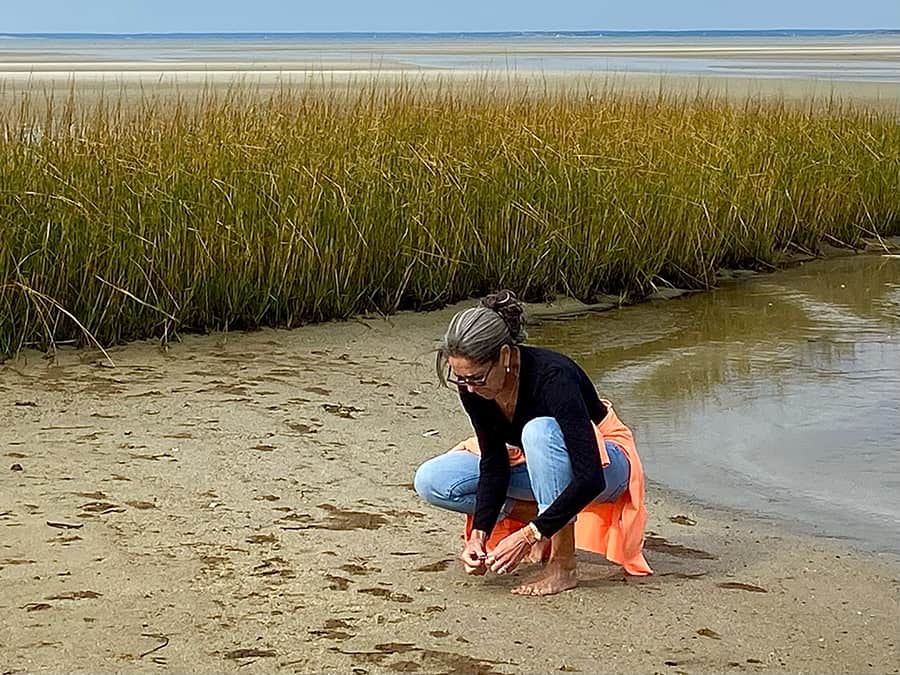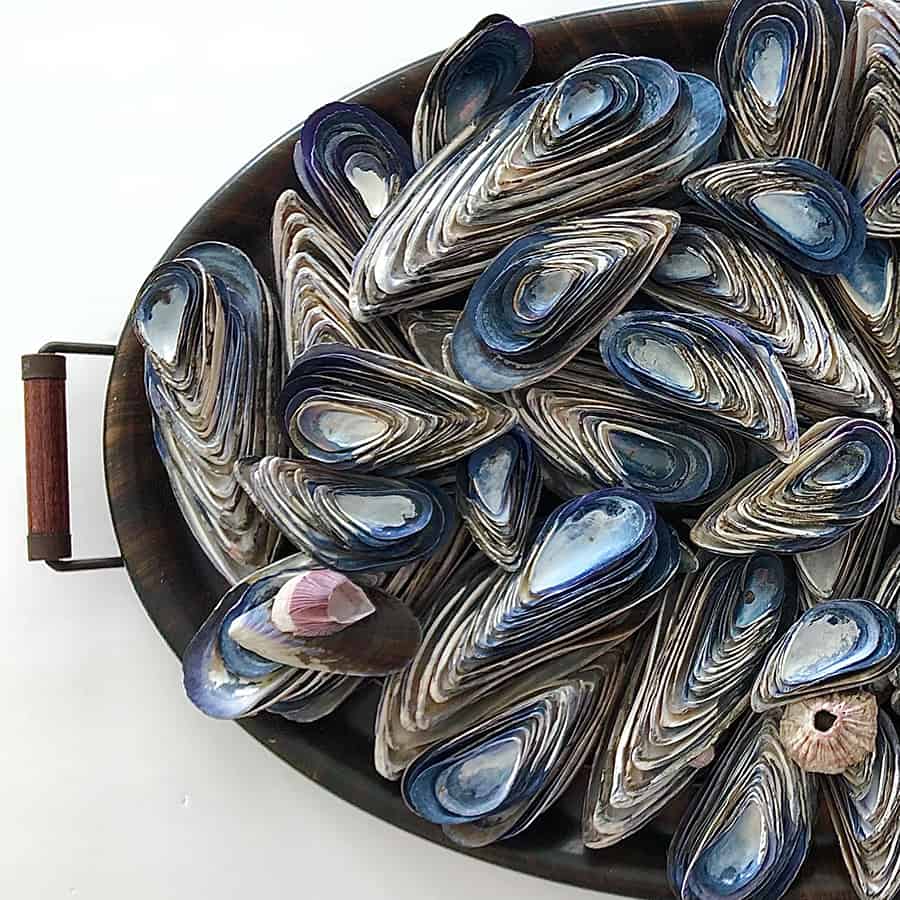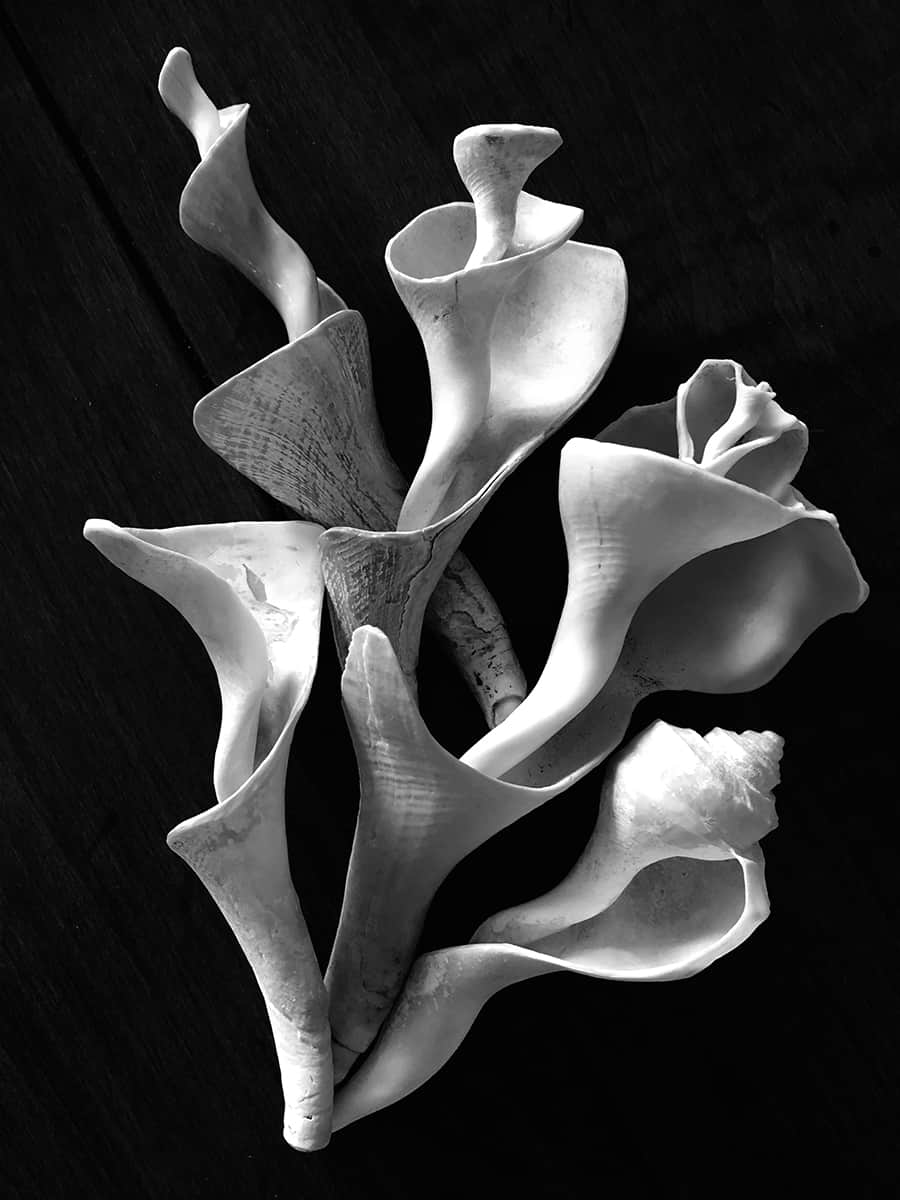Jody Cukier’s Artistic Journey

The Japanese celebrate the art of kintsugi or “golden repair” where lacquer is mixed with powdered gold to fix the cracks in ceramics. It treats the breakage and repair as part of the history of the object rather than as something to disguise. Jody Cukier embodies this philosophy, turning to art to express both what has broken and has the power to endure. Cukier lost her 13-year-old daughter Julia in 2010 when she was killed crossing the road to catch her school bus in Los Angeles. She had to plot a course forward in unimaginable grief, leaving a successful career in advertising and motion picture marketing to return to her Long Island roots and discover a passion which would reconnect her to life.
The seeds of her artistic vision were first planted when she was packing to leave Los Angeles, noticing the patterns in her collections. She experimented with photographing them in ways where the graphic composition was both representational but abstract. She was struck when enlarging a photograph of a tray of mussels at Staples that people were fascinated, coming over to ask what it was. Cukier studied art and psychology at Harvard before earning her MBA and also has a background in home design, influencing her perceptive eye. Her first solo gallery show in Manhattan titled “Come Shell or High Water,” presented her photography and physical assemblies to the public.


Reminiscent of “Gift From the Sea,” Anne Morrow Lindbergh’s contemplative journey back from the grief of losing her son, Cukier found solace on the sea shore. Walking the beaches intensified when she moved to her new home in Hampton Bays, further developing this art form of collecting shells and marine-life fragments, poetically weathered and worn. She creates sculptures and abstract assemblies which she photographs to produce archival pigment prints. “My work relies on the physical labor of hand collection, the patience of hand manipulation and the meditative benefits of both,” she explains, “The process by which I search and sort, collect and create, is as important as the work that results.” When asked her secret favorite local beaches to scour, she replies with a laugh, “That’s like asking a fisherman where the fish are.”
As a storyteller Cukier realizes, like the jagged piece of glass which is tossed into the sea and emerges over time opaque and with smooth edges, it is about the journey. Cukier comments, “It’s all about bearing witness, to find beauty in that which is broken. That is optimism for people. I am the daughter of a Holocaust survivor. My father’s experience provided an emotional blueprint for a way of living, not recovery per se, but to manage the persistent ache. When I am on the beach putting one step in front of the other and picking up a shell, it is the only thing I am thinking about.” She adds, “The point isn’t perfection. It’s what has survived the tossing and the tumbling and endured. I use that as a metaphor for the human condition.” She recounts the day she had laid a picture of her daughter Julia’s dance poses next to a black and white photograph of carved whelks. It was only when they were side by side that she realized the influence, a connection she has highlighted in talks at her alma mater and more recently, at the Parrish Art Museum.
Cukier’s work has been exhibited at Southampton Town Hall, the Shelter Island Historical Society, as well as Guild Hall, and the Southampton Cultural Center and is in private collections in New York, Los Angeles, Connecticut, St. Louis, Massachusetts, and Cabo San Lucas. Her connection to the local art community is also of vital importance, a member of the Southampton Artists Association and group of photographers meeting at the John Jermain Library in Sag Harbor.
She cites the importance of art programs in schools, crediting her public high school in Levittown and her combined studies in art and psychology at Harvard for an inspiring art education. Cukier also remains passionate about supporting street safety initiatives.
While the grief of losing her daughter remains ever present, Jody Cukier’s art has become her “golden repair,” that which holds the heartbroken pieces beautifully together.











!['The Maples' is a prestigious generational compound of two extraordinary estates: 18 Maple and 22 Maple. This rare offering, designed by luxury architect Lissoni partners New York and developed by visionaries Alessandro Zampedri-CFF Real Estate and JK Living, redefines opulence with the highest quality of craftsmanship and captivating views of the Atlantic Ocean. Represented by @nycsilversurfer and @challahbackgirl of @douglaselliman. [link in bio]](https://hamptonsrealestateshowcase.com/wp-content/uploads/sb-instagram-feed-images/438891010_1083749139481747_7890082604579275354_nfull.jpg)
![Featuring 360-degree water views on Mecox Bay, the Atlantic Ocean and Channel Pond, 1025 Flying Point offers the ultimate beach cottage that is flooded with natural light. With panoramic views, proximity to the ocean, and a private walkway to Mecox bay for kayaking or paddle boarding, this truly is a special retreat. Represented by @ritcheyhowe.realestate and @hollyhodderhamptons of @sothebysrealty. [link in bio]](https://hamptonsrealestateshowcase.com/wp-content/uploads/sb-instagram-feed-images/438994305_737511778456166_4602476013493875279_nfull.jpg)
![Attention advertisers! 📣 Secure your spot in the highly anticipated Memorial Day edition #HRES. Reach thousands of potential clients and showcase your brand in one of the most sought-after publications in the Hamptons, NYC, Palm Beach, and beyond. Contact us now to reserve your ad space! [link in bio]](https://hamptonsrealestateshowcase.com/wp-content/uploads/sb-instagram-feed-images/438549843_275102939023235_6718257301437562124_nfull.jpg)
![You eat with your eyes, and on the East End, it’s important that what you eat looks just as good as how it tastes. At @rosies.amagansett, the restaurant itself is plenty photo-worthy with blue ceramic tiling and yellow and white striped fabric wallpaper. But for a dish that will light up your photos, head directly to the salmon tartare! [link in bio]](https://hamptonsrealestateshowcase.com/wp-content/uploads/sb-instagram-feed-images/437094269_7296727147115953_1594410326824303644_nfull.jpg)

![We were honored to be the media sponsor for @blackmountaincapital's open house event with @jameskpeyton and @jfrangeskos at 11 Dering Lane in East Hampton! Other sponsors included @landrover, Feline Vodka, @rustikcakestudio, @la_parmigiana, @lahaciendamexicangrill11968, @homesteadwindows, Stone Castle, @talobuilders, and @thecorcorangroup.
A big thank you Carrie Brudner of Black Mountain Capital for putting together this fabulous event! [link in bio]](https://hamptonsrealestateshowcase.com/wp-content/uploads/sb-instagram-feed-images/437081213_762912965932136_6847332836522786568_nfull.jpg)

![Blooms Galore at the Long Island Tulip Festival! 🌷✨ Mark your calendars for April 15th as the vibrant tulips at @waterdrinkerlongisland burst into full bloom! Enjoy a day filled with colorful splendor, food trucks, live music, and more. [link in bio]](https://hamptonsrealestateshowcase.com/wp-content/uploads/sb-instagram-feed-images/437083429_974242677583725_6855805712693638343_nfull.jpg)
